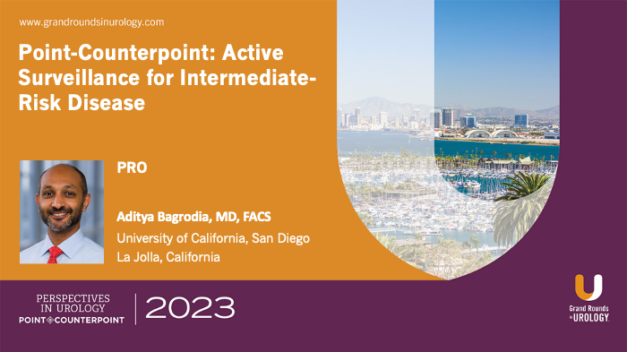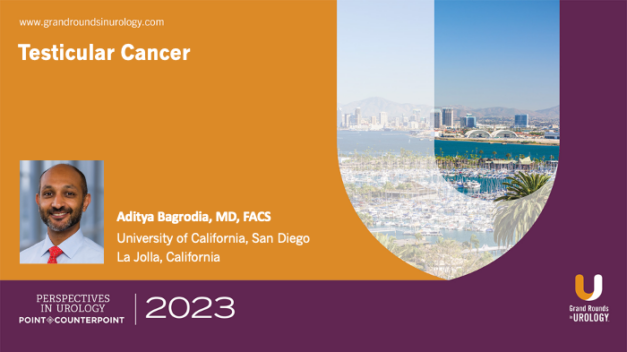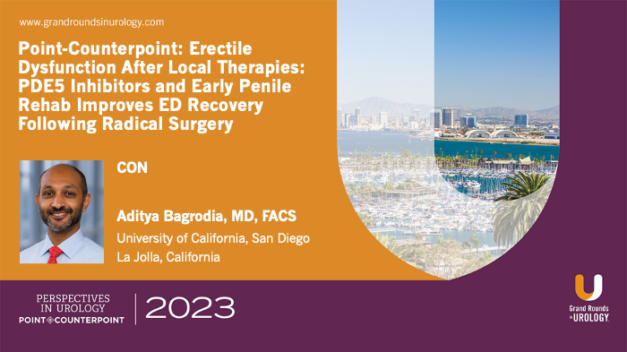Point-Counterpoint: Active Surveillance for Intermediate-Risk Disease – Pro
Aditya Bagrodia, MD, FACS, asserts that active surveillance (AS) for intermediate-risk prostate cancer is a viable option, emphasizing the current epidemic of overtreatment. He shares data from The Prostate Cancer Intervention Versus Observation Trial (PIVOT) showing that after a median of 10 years, between-group differences in all-cause and prostate-cancer mortality were not significant among men who either had radical prostatectomy or AS.
Dr. Bagrodia shares data from the ProtecT trial on 10-year outcomes after monitoring, surgery, or radiotherapy for prostate cancer, and he highlights morbidity data from prostate cancer among the subgroups and points out that over the years about 50 percent of patients on AS had treatment intervention. He draws the conclusion that in unselected patients with intermediate-risk (or worse) prostate cancer, early intervention is not associated with better outcomes. Additionally, many patients on AS may ultimately require treatment.
Dr. Bagrodia lists important aspects of selection such as tumor volume, percentage pattern four, adverse histology, genomic risk classifier, magnetic resonance imaging (MRI) findings, patient comorbidities, and patient compliance. He shares data showing that increased age, prostate-specific antigen (PSA) density, percentage pattern four, and core involvement were all reliable risk factors. Dr. Bagrodia addresses pathology and germline characteristics as important considerations for practitioners. He advises using molecular characteristics to augment National Comprehensive Cancer Network (NCCN) risk groups.
Dr. Bagrodia shares guidelines stating that with asymptomatic patients with limited life expectancy, clinicians should recommend AS and, for patients with favorable intermediate-risk prostate cancer, clinicians should discuss AS, radiation therapy, and radical prostatectomy. He concludes that AS is a guideline-directed option for patients with intermediate-risk prostate cancer. He emphasizes a personalized approach that considers patient comorbidities, disease features, and molecular features.
This lecture is part of a Point-Counterpoint debate. Its opposing lecture is “Point-Counterpoint: Active Surveillance for Intermediate-Risk Disease–Con.”
Read More




